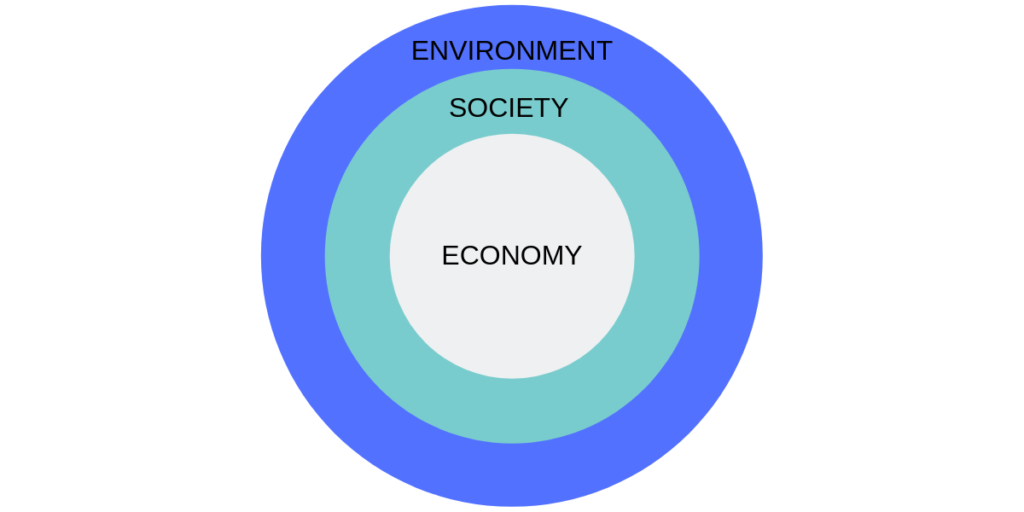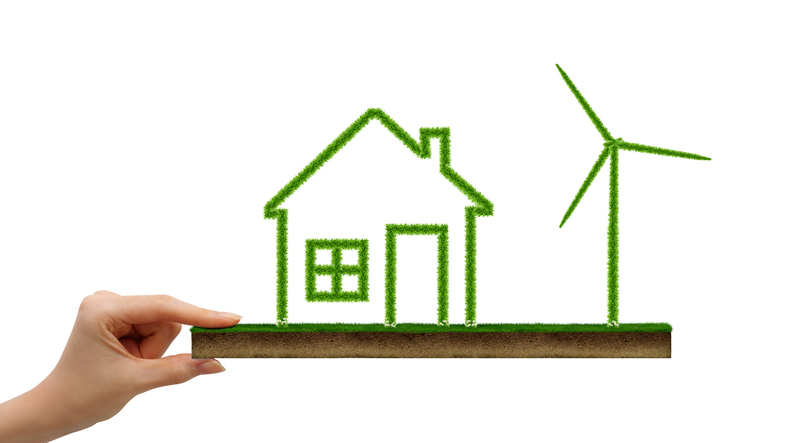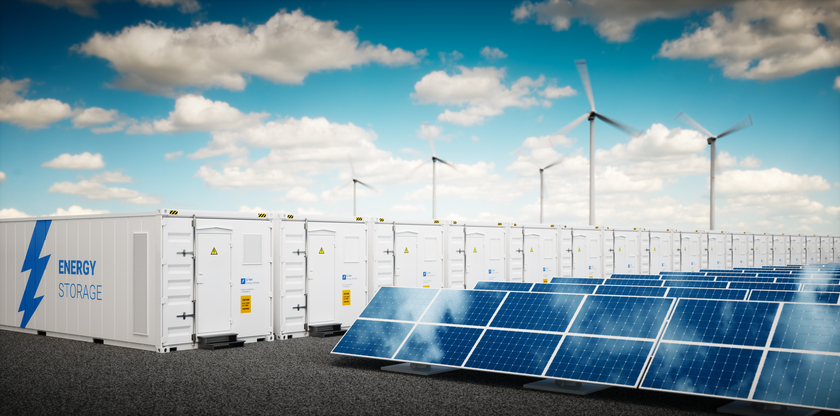No matter who you are or what industry you’re in, you’re bound to experience the effects of climate change. Poor air quality and abnormal weather patterns are just some of the symptoms of a sick world that we’ve already begun to experience.
According to Earth Day, nearly “eight million metric tons of plastic winds up in our oceans each year. That’s enough trash to cover every foot of coastline with five full trash bags of plastic…”
Yikes.
Product designers and companies are in a unique place in that they directly contribute to the world’s ecological footprint. They can design products and packaging that don’t end up wasting away in our landfills for years.
That’s the key here. Sustainable product design is necessary to curb climate change.
One example of a design that’s begging for a revamp and reintroduction is the straw. Did you know that 500 million plastic straws are used every day in North America? And the majority of these aren’t recycled or reused – instead, they end up in our oceans and landfills.
No matter which way you look, sustainable design is the future.
What is Sustainable Design?
The Brundtland Commission was put together to unite countries in pursuit of sustainable development. In fact, the term was coined by them, and their definition holds today.
“Sustainable development is development that meets the needs of the present without compromising the ability of future generations to meet their own needs.
- the concept of “needs,” in particular the essential needs of the world’s poor; and
- the idea of limitations imposed by the state of technology and social organization on the environment’s ability to meet present and future needs.”
Sustainable design encourages a balance between all things natural and the human world. There are three components to this: environment, society, and economy, often represented in a concentric circle.

As you can see, society and economy rely on a healthy environment to thrive. Without a healthy planet, humans aren’t able to prosper.
Why You Should Care
Sustainable design comes in many forms. Not only can products be designed with the environment in mind, but architectural design can also be green. While we’re now able to connect with a global network through the Internet, we’ve given up our connection to nature.
Building sustainable products is forward-thinking. It saves the environment while saving you money. In fact, “going green” has become a marketing initiative in its own right.
Consumers are becoming increasingly aware and concerned with their environmental footprints. This is translating to them endorsing companies with initiatives in place to curb pollution and greenhouse gases while patronizing the offenders.

A national survey done by Tiller, LLC found that 87 percent of women and 78 percent of men were looking to “go green” in 2015. Another interesting stat is that 73 percent of survey respondents believed that irresponsible companies should be patronized, while 43 percent straight-out refused to buy from companies with negative environmental policies.
So, if saving the planet isn’t at the forefront of your mind, consider the positive effects that sustainable design will have on your business.
Sustainable Product Design Principles
Conscious design can easily reduce or eliminate harmful practices. While the way to do it differs depending on the discipline – architecture, product design, urban planning, etc. – there are some core principles that you can use to guide you.
- Use materials that have less of an environmental impact. They should be recycled, non-toxic, or sustainably produced.
- Consider buying local materials that come from renewable resources.
- Ensure every step in your manufacturing process is energy efficient.
- The higher quality the product, the longer-lasting it will be. Increase the lifespan of your product so that it doesn’t have to be replaced as frequently.
- Make your products easy to disassemble so that the parts can be reused and recycled.
- Consider your product’s lifecycle.
These are just a few guiding principles that you should keep in the back of your mind, regardless of the field you’re in. They may not all apply to you but adopting the ones that do will go a long way. You might also want to consider checking out our guide on designing environmentally friendly products.
Below we’ll look at some of these in more detail.
Choose Materials That Have Less of an Environmental Impact
Perhaps the most simple of the principles, choosing environmentally friendly materials is where you should start. Whether you’re designing a home or a new pair of shoes, there are steps you can take to ensure they’re sustainable.
Let’s start with what you don’t want to use. An obvious culprit and the antithesis of sustainability is plastic, which ends up in our oceans and landfills.
A less obvious material you should avoid using in your products is polyester that isn’t explicitly recycled. It’s often used in clothes for its wrinkle-fighting properties and affordability.
But polyester is a synthetic petroleum-based fiber that is currently responsible for over 70 million barrels of oil each year. And this fiber is the most commonly used but takes over 200 years to decompose.
So, what should you use instead?
The first thing to think about is how the material will function given its purpose. There’s no use in choosing a sustainable material if it’s not suited for the job. After finding materials, make sure they’re:
- Recycled, Biodegradable, or Recyclable. Materials that can be repurposed or recycled can be turned into another item for someone else, saving energy and waste that would be used to create a new item from scratch. Biodegradable material won’t sit in landfills or the ocean.
- Non-toxic. Some materials have been linked to disease, frightening congenital disabilities, or worse.
- Easily Reproduced. Fossil fuels are a finite resource that will eventually dry up. To do your part, use something that can be reproduced, like trees or straw.
- Rapidly Renewable. Rapidly renewable materials are not only reproduced, but they can be reproduced quicker.
- Low Waste. Some materials require waste to produce than others. Steel is naturally lower waste than aluminum. Know what type of waste your manufacturing cycle is producing before you commit.
- Abundant. You don’t want your material to be so scarce that you’re using the last bit. If it’s easily reproduced and rapidly renewable, then it follows that it’s abundant.
Ensure You’re Reducing Energy Consumption
Sustainable design is essential to our future. While recycling and repurposing our materials is great, reducing our energy consumption in the first place will go a long way. Product designers should focus on minimizing their product’s resource consumption.
When manufacturing your product, consult with eco-conscious engineers to ensure your process is as energy efficient as possible. Use sustainable energy sources, like solar and wind, and consider the embodied energy of the material you choose.

Embodied energy is the energy used to produce, transport, and dispose of the material. Those with low embodied energy are preferable.
Two other things to keep in mind to reduce your energy consumption are lightweighting and your product’s lifespan.
Lightweighting refers to creating product’s using the least amount of materials possible. This reduces the amount of energy required to manufacture the product, to source the materials, and lowers the cost of production. It’s a smart choice for any designer.
While it’s most commonly used in the production of vehicles, it’s relevant here too.
Perhaps the best way to reduce your energy consumption is by producing a high-quality product that has a long lifespan. I mean, if your product is built to last, you won’t have to manufacture as many, saving energy.
Nowhere is this principle more thrown aside than the fashion industry, where cheap fashions rule at the cost of the environment. In fact, it’s actually a strategy for maximizing profits. But putting profit over the environment is what got us in this situation, so it’s time to start designing products that last.
Consider Your Product’s Lifecycle
When designing your product, consider the entire lifecycle that the product will go through. Every product goes through at least four stages each with its own opportunities for saving energy. These stages are:
- Manufacturing
- Transportation
- Use
- Disposal
If you’re working on a new product design, you’re in the best position. You can optimize the lifecycle to ensure each stage uses minimal waste and less energy than others. If you’re revamping your product’s lifecycle, you have a bit more work to do.
To simplify the process, start with the stage that has the biggest effect on sustainability and work from there. Work toward the biggest change and eventually your lifecycle will be optimized for the environment.
Find opportunities to minimize energy expenditure and waste production. Avoid using toxic chemicals and materials with high embodied energy. Then consider what will happen after your product is thrown out – will it be recycled, biodegrade, or does it end up in a landfill?
Keep Disassembly in Mind
When designing a new product, it’s important to think about the aftermath. Ask yourself what will happen to the product when it meets its end. Hopefully, it’ll be either recycled, repurposed, or biodegrade.
To make these processes more effective, keep disassembly in mind. If your product is made of many parts, each part could potentially be repurposed. The easier disassembly is, the more likely the parts will end up where you intend them to go.
Companies Successfully Using Sustainable Design
What better way to succeed than to model your product design and business off of a company that’s already sustainable? This list of companies is killing it with their sustainable product design initiatives.
IKEA
A great example of a company doing sustainability right is IKEA. The company adopted an environmental action plan in 1992, decades before climate change would come to the forefront. The action plan stated that IKEA would “maximize the impact of resources invested and reduce the energy necessary to address isolated issues.”
IKEA was one of the first companies to ban plastic bags, giving their customers the choice of purchasing reusable bags instead. Their restaurants use reusable plates and cutlery, and the company is focusing on renewable energy sources.
They focus on the product lifecycle as a whole, from idea to end of life. Their products are flat-packed, allowing more to be shipped at once. The company works with environmentally friendly forests and cotton to source their materials, and they enforce environmental standards on the suppliers they work with.
I could go on and on, but I’ll leave you with this. On June 7, 2018, at the Democratic Design Days, IKEA pledged to “become people and planet positive by 2030.” This means:
- Designing all IKEA products with new circular principles, with the goal to use only renewable and recycled materials
- Offering more plant-based choices in their restaurants
- Creating services that make it easier for customers to transport and pass on their products
- Developing more affordable solar solutions for the home
- Zero emissions for home deliveries by 2025
Unilever
In 2010, Unilever launched their Sustainable Living Plan, which is a blueprint for sustainable growth. The goal is to mitigate risk while increasing profits and getting sustainable products into the hands of their over 2.5 billion customers.
When the plan launched, CEO Paul Polman stated that he wanted double profits while cutting their environmental footprint in half, and they’ve come a long with since. Over 75 percent of the nonhazardous waste produced by the company doesn’t go to landfills.
By 2025, Unilever aims to have 100 percent of their plastic packaging to be reusable, recyclable, or compostable. They’ll also be using 25 percent more recyclable plastic in their products.
Polman stated, “As a consumer goods industry, we need to go much further, much faster, in addressing the challenge of single-use plastics by leading a transition away from the linear take-make-dispose model of consumption, to one which is truly circular by design.”
Unilever focuses on making their packaging more sustainable. To find out how you can follow suit, check out these sustainable packaging design tips.
Panasonic
Another brand that’s doing good for the planet, Panasonic has hefty goals for renewable energy and cutting carbon emissions.
Their most recent proclamation was the formation of the Panasonic Environment Vision 2050, which formed in 2017. They aim to reduce their energy used by improving their manufacturing processes and improving the energy-saving nature of their products while creating more clean energy.
They’ve created pure hydrogen fuel cell batteries that produce clean energy and are the way of the future. In addition to that, Panasonic’s factories are becoming more energy efficient, with a number of them operating off of 100 percent clean, renewable energy.
To learn more about Panasonic’s vision, check out this video.
Adobe
This tech giant has plans of using 100 percent renewable energy by 2035, which they began pursuing early on. They participate in many groups and initiatives with an aim for sustainability, including RE100, World Resources Institute (WRI) Clean Power Coalition (CPC), and Renewable Energy Buyer’s Alliance (REBA).
Over 70 percent of Adobe’s workplaces are LEED-certified, and they’ve proven the model that energy efficiency is not only good for the environment but that it can be profitable. In 2017, Adobe’s revenue grew 25 percent, while their normalized carbon intensity decreased by eight percent.
In India, Adobe has purchased a 2.5-megawatt, grid-scale open access solar PPA for their Bangalore workspace. By doing this, they’re not only becoming more sustainable as a business, but the community benefits from this grid as well.
Nike
Nike has really cleaned up their act regarding their environmental impact. What once was a company synonymous with slave labor has become a leader in fashion sustainability.
At present, they’ve begun to recycle more of their materials (they’re the world’s top user of recycled polyester); reduced water usage through techniques like colordrying, which dyes fabric without water; and use 100 percent sustainable cotton.
In 2015, Nike topped Morgan Stanley’s list of sustainable apparel and footwear companies in North America, which considers it’s labor relations.
In the future, Nike is aiming toward 100 percent renewable energy, sustainable contract factories, producing zero waste, and halfing their environmental impact. If they can do this, they’ll become a great model for other consumer product designers to follow to not only become more sustainable but increase profits in the meantime.
Kraft Foods
A huge food supplier, Kraft Foods going completely sustainable definitely has a huge effect on the environment. In 2015, they pledged to reduce greenhouse gas emissions, reduce energy consumption, reduce water consumption, and reduce waste sent to landfills by 15 percent.
While that may not seem like a large number, consider the billions of Kraft products used every day.
They’ve also moved down the supply chain to ensure they do not contribute to deforestation or social issues like child labor. One hundred percent of their palm oil is sustainably sourced.
In addition to that, their animal suppliers are expected to meet certain standards guided by the Five Freedoms of animal welfare, which are:
- Freedom from hunger and thirst
- Freedom from discomfort due to the environment
- Freedom from pain, injury, or disease
- Freedom from express normal behavior for the species
- Freedom from fear and distress
If you happen to be looking for assistance designing an environmentally friendly product, Cad Crowd can help. We connect pre-vetted, qualified CAD designers and 3D modelers with clients like you. Our services are completely confidential and guaranteed to satisfy.
